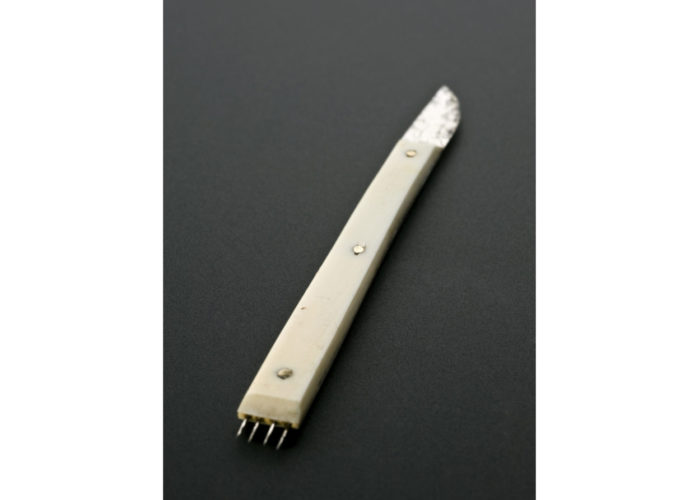Weir smallpox vaccinator
Theme: Economic and technological revolution, Medicine, science and the people
In the 1700s smallpox was probably the single most lethal disease in Britain – especially among children. But in 1796 Edward Jenner made a discovery that would eradicate the disease and lead to a revolution in public health – it would become known as vaccination.
He noticed that dairymaids who caught a minor disease called cowpox, from infected cows, seemed immune to smallpox – a common but much more serious disease.
While travelling in Turkey in the early 1700s, Lady Mary Wortley-Montagu observed people being injected with fluid from smallpox blisters as a precaution against the disease. This process became known as variolation. Having suffered and survived smallpox herself, she arranged for her own children to be inoculated and called for the procedure to be introduced in Britain. Variolation was risky and something safer was needed.
Edward Jenner (1749-1823) was a country doctor from Gloucestershire. He noticed that dairymaids who caught a minor disease called cowpox, from infected cows, seemed immune to smallpox – a common but much more serious disease. He decided to test this by carrying out his now famous experiment on an eight-year-old boy named James Phipps. Jenner took a small amount of pus from a cowpox blister and inserted it into a small incision made in the boy’s skin. When subsequently exposed to smallpox, James proved to be resistant. At first, Jenner’s assertion that his method could protect people from smallpox was dismissed and even ridiculed. But after more trials, including on his own 11 month son, his method was accepted and widely adopted. He was subsequently honoured around the world.
Edward’s method (which he described in a publication in 1798) became known as ‘vaccination’, after the Latin word ‘vaccinus’ meaning ‘of, or related to cows’. Vaccination works by introducing a weak form of a disease into a person’s body. They will then produce antibodies to combat it, without actually becoming ill. These antibodies will protect them if they are later exposed to the disease through contact with an infected person. During the 1800s vaccines were developed against other deadly diseases including cholera, anthrax, rabies and even bubonic plague.
This simple instrument was used to vaccinate people against smallpox. The four small blades were used to scratch the skin lightly in a cross-hatch pattern. The larger blade at the other end was used to collect and apply pus from a cowpox blister.
Today, smallpox is the only human disease to have been completely eradicated worldwide, largely as a result of vaccination.
Did you know..?
Jenner was honoured worldwide for his discovery, with a ring from the Empress of Russia, a belt of wampum beads and a certificate of gratitude from representatives of several North American Indian tribes, and statues in Tokyo and London. Napoleon, the Emperor of France, was so impressed with Jenner’s results that he had all his soldiers vaccinated against smallpox and awarded Jenner a special medal.
Watch our ‘Vaccination’ video
See the vaccinator come to life in our Animated introduction to the Age of Revolution
Use our Classroom resources to investigate this object and the theme of Medicine further.
Highlights:
- Using objects, artworks and other sources to find out about the past
- What factors drove change in medical practice during the Age of Revolution?
- Was change in medical practice evolutionary or revolutionary during the Age of Revolution?
- Mystery objects
And much more…
Sources & acknowledgements
This object description and its related educational resources were researched and written by our team of historians and education specialists. For further information see the item’s home museum, gallery or archive, listed above.
- Related resources
- Enquiry Questions
-
Education overview
You can access a range of teachers resources related to this object and more on our education page.
Please also see our glossary of terms for more detailed explanations of the terms used.
-
Curatorial info
- Originating Museum: Science Museum
- Accession Number: A600031
- Production Date: 1831-1870
- Creator: unknown
- Material: blade, steel, handle, ivory, scarificator, steel
- Original record
-
Use this image
Image courtesy of the Science Museum Group, on loan from the Wellcome Trust. You can download a high-res image of the vaccinator on the Science Museum website.
- Rights Holder: © The Board of Trustees of the Science Museum
- License Type:
Find it here
This object is in the collection of Science Museum



